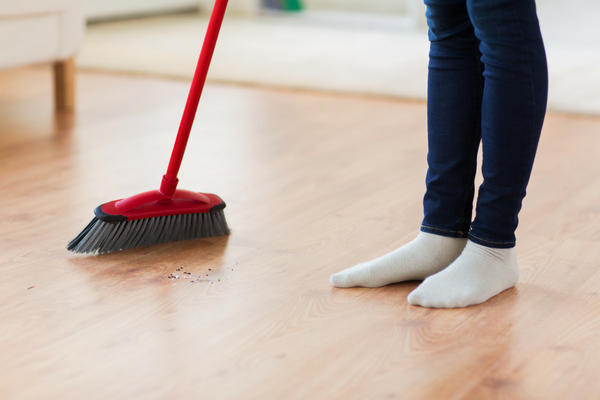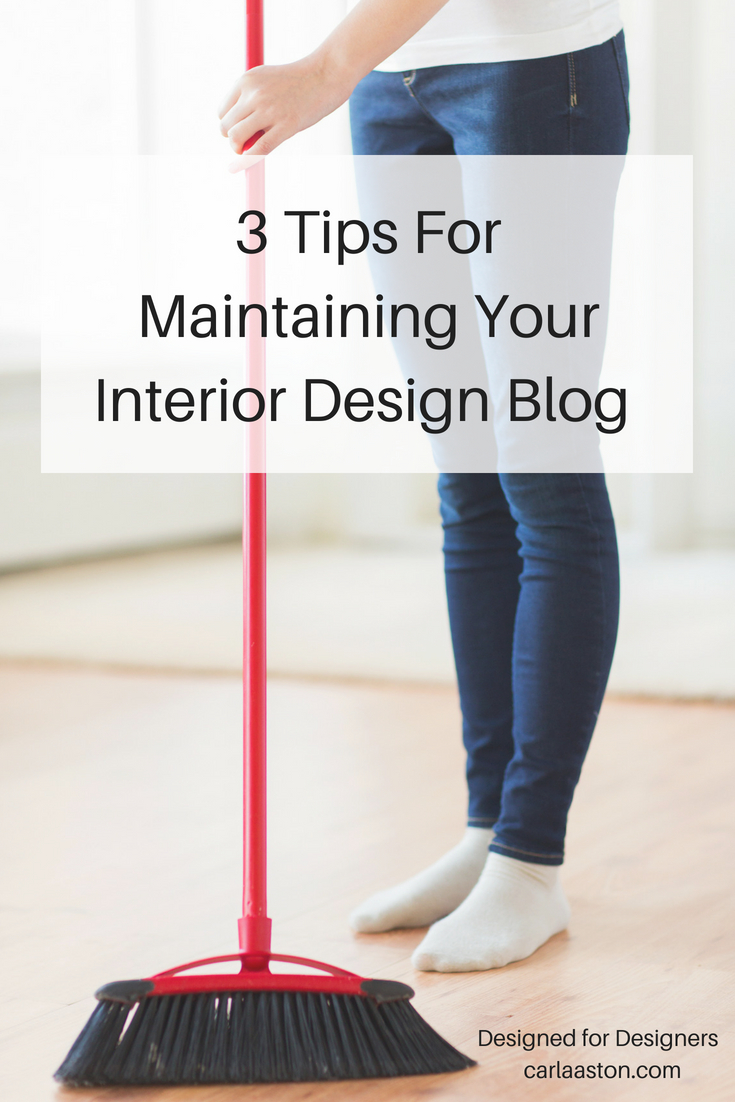Starting a new website and design blog can be fun and exciting.
If it is brand new, with no content history, then you should be working to add content as often as possible, beefing up your site to add quality and depth.
The more blogposts you have written, the more you can link back to, helping your readers travel around your site, staying awhile, which is good all the way around.
However, at some point, a few years down the road, the early posts in the site can start to show their age.
Links and apps break, content can start to look dated. If you have an older, evergreen post that is starting to get traffic, it is a good idea to check it out and make sure it looks its best.
I have an old design blog by most standards.
The template used for my site is actually no longer even available on Squarespace. When my website was first designed, in 2011/12, the template was brand new, it was even in beta.
It was a “responsive” website which was the big, new thing to have.
Thank goodness it had that feature as that is the norm now. It wasn’t even optimized for mobile then, we did that a few years later. And now, I’m just getting around to going https. :-(
What has come to my attention is how much my design blog needs maintenance and updating.
Not from a coding aspect, but from an SEO standpoint.
Here’s the thing…. Google constantly changes its criteria for favoring certain websites over others. Just like the new GDPR rules that have come out about email lists, changes are made constantly that we must take notice of and adapt to.
Not only that, I learn new things about all this every day and now see mistakes that were made way back then or how I could do things better with that content.
I am also seeing old posts that have content that doesn’t really apply anymore and even is, in fact, embarrassing.
That means maintenance.
One of my good friends who gives me great blogging advice, Deborah Von Donop, of DVD Interior Design, (more about Deborah at the bottom of this post) told me to go back and update older posts that were getting traffic.
By update, she meant refresh the content, maybe replace some images, and then republish them forward in my blog to a more current date, without changing the URL. Google favors more recent content dates over older content from 5 years ago.
I pondered that for awhile and checked in with my SEO person who, for $50 a month, basically runs my site through his tools to check for 404’s and such and then gives Google a message to reset things, thereby clearing out the problems he's identified.
(That is likely a horrible way to describe what happens, I’m sure, but I’m a designer, not a web guru.)
And a 404 is basically a URL on your site that has been deleted or is no longer live. Google doesn’t like those much, so don’t go around deleting blogposts randomly unless you have a “fixer” like I do.
He agreed that updating older posts is good for SEO and that my site was so large and has so much content that it was competing with Google AMP sites. That kind of puts my site at a different level and it was pushing mine down comparatively, because I my site is not AMP.
It’s like growing and now competing with the big dogs, but you’re still really small. :-(
Ugh. So, I’ve made a plan to get heavily into the totally non-fun stuff of blog maintenance this year!
I could pay to have someone help me with this, but honestly, I know my content better than anyone. I know how I want to come across on my blog. I know the things I’d like to touch up and say differently. I know the images I’d like to replace.
I know all that better than anyone else and frankly, no one else cares about this as much as me. Seriously!
I listened to someone on the podcast from Social Media Examiner awhile ago, and some guy told about how he spent time updating his old blogposts and how that, over time, dramatically affected his traffic.
He didn’t mention anything about republishing them forward, time-wise, but he did mention deleting old ones that were not getting traffic and were not relevant anymore. He talked about how having a really tight, well maintained blog was helping his SEO. He also talked about his strategy to do this.
Here’s another UGH….. it will take so much time and work!!!!!!
Start A Spreadsheet To Keep A Record Of Blogposts
He kept it all organized with a spreadsheet. Apparently with Wordpress you can download the links to all the posts on your site into a spreadsheet with some app, but you can’t with Squarespace.
So, I’m going through my blog, post by post, from the beginning, entering each post’s URL into a spreadsheet. In the spreadsheet, I have the date it was published and then how it was refreshed and the date that was done. Then, if I republish it to a different date, I’ll note that too.
So far, I’ve done a little over one month, June/July in 2012, and I deleted 11 blogposts (that really needed to go)!
I moved 4 of them to dates in 2017 and 2018.
This Outdoor Dining post was one I moved to a spring 2018 date.
I updated the board with fresh products and Reward Style links. I was not part of Reward Style when I first published this post.
After I moved and refreshed it, I posted it out through Tailwind to Pinterest to help it get some attention.
What’s left in that 2012 time period are my opening few blogposts, a few time-sensitive ones, at least one per week. I don’t know this for a fact at all, but I assume it helps to show you have been around awhile. Maybe?
I looked at each post, if I didn't delete them, I updated any necessary links, changing out images if necessary, and deleted a few apps that were dead on the posts.
I reread the content to make sure it was in line with my thoughts and content today, the brand that I’ve developed over the years.
The first snippet of my spreadsheet for my interior design blog's maintenance
This post was good one, written in 2012 about the difference between a designer and a contractor. I think I wrote it in response to a client asking the contractor what he thought of the design, right in front of me. :-(
I like that post and moved it to a date in 2017.
Maintaining Your Design Blog By Checking Links, Apps, Plug-ins
Here’s an example, linked below, of one of the apps we used a few years ago that is no longer working.
It’s not working because back then, it was a free app. Then, it moved to a payment system where, once a certain number of people viewed it on their site, they would start charging me.
I paid for awhile, just to keep it up, but then stopped using the app for future boards and finally stopped paying.
Now, those old posts show up like this below. :-(
Blogpost link: How Prince William & Duchess Kate (Should Have) Decorated Baby George Alexander Louis' Nursery
When you get to storyboard in the post, it is now covered in dark shading and links away to their site. :-(
When I update, I'll check to see if that post has gotten any traffic in the last year, then delete it if not. I'd redo that storyboard and get new links in RewardStyle if it seemed to have some decent traffic. That would take some time, so I will evaluate whether or not it will be worth it.
Because, guess what!?!
Silicon Valley is all about inventing some great new app that we all think we have to to have and then selling the whole business to highest bidder. After spending 6 months or a year as a highly paid employee the original entrepreneur walks away.
The new owner typically then deletes it, changes it up completely, changes the TOS to something you can’t live with or tweaks it over time so that it becomes unrecognizeable and not anything you really want any more.
Not only that, they lure you in with free access and then BOOM, start charging you for usage after all your info and content is there and you can’t bear to lose it.
Example: Disqus commenting system
The Disqus commenting platform was free for years and now I have to pay $10 a month or have their ugly advertising on my blog. If I delete it or change to another commenting platform, I will lose ALL MY COMMENTS ON MY BLOG.
Now, I have to say, Disqus does a great job. I just wish I had known from the get go they were going to a pay system. (Duh, how did I not figure that out earlier?)
I might have used Squarespace’s commenting system because then the comments would stay with my blog as long as I had a blog instead of resting in some other app!
I've already lost tons of comments on my blog because one day I accidentally deleted Disqus, trying to get their advertising off my site.
If you have Disqus, don't delete it! Once you delete, it is irretrievable. I lost soooooo many nice comments! :-(
So, here’s a factoid…….everything that’s free that you install on your site will one day become a pay-to-keep system. (Just assume that from now on.)
By then, it will be full of your information that you can’t bear to have disappear, so you will be forced to pay.
We’ve seen that enough recently, haven’t we?
Don’t fall for all the bells and whistles of new apps and plug-ins.
I wish I had $10 for every post I’ve used this app on, Visibli. It was supposed to be the end-all for monitoring traffic and to keep people coming back to your site, after they had linked away from your site to some valuable link you inserted into your post. All the SoMe marketing people raved about it (back in 2012).
Well, I can’t find the app online now and it created tons of spam links on my old posts. This is one of the big items that has to be cleaned up with all my maintenance.
Google definitely does not like this. (I'm not even going to link to one of my old posts that still has it, as I don't want you get into any spam.)
Can you tell I'm a little frustrated here? :-)
Maintaining Sponsored Posts And Paid Links In Your Blog
So, here’s another interesting tidbit.
So many bloggers love sponsored posts. I mean, if you’re doing a post anyway, using a product or service that might be of interest to your readers, why not try to get it sponsored? Why not make some money at this?
Guess what? Sponsorships don’t necessarily last forever. I was part of a team of bloggers for a brand, for about a year. I created content for them and they paid me for each post. However, they disbanded the team after that year and discontinued the sponsorship.
So, I still have all that beautiful content on my site that links (linked) to them. I’m not sure what the normal practice is for sponsored content, but I don’t believe it means "links in perpetuity" if I am no longer in the relationship.
So, if I’m still giving them traffic, but not getting paid or part of the program anymore, that’s a problem for me.
I’ve also had brands or websites pay for text links in my site. This was more popular a few years ago, not so much now. Brands would pay $50-$100 for a text link in a popular blogpost for a one year time frame. I only had a few.
Well, after awhile, I mostly forgot about them. I think most bloggers do.
However, now that I’m going through and checking these posts and the links within, I’m making sure that I’m taking those OUT of my blog. I don’t want to give any google juice to someone who isn’t paying anymore or reciprocating in some manner.
I’ve spent way too long building my blog and working the quality posts I put out.
If a brand (or even another blogger) is no longer paying or returning the favor somehow, then that link will be removed.
So, I’m sharing this today so that all you designers who are newer to this game might start a habit and have some knowledge that will help you with your blog maintenance later on down the road.
Highlights to remember about blog maintenance:
- Start a spreadsheet of your posts now, in chronological order. Make sure you have a category for the topic of the content and date it was published. It is just a good practice to have all this somewhere other than your website, “just in case”, and just for maintenance records.
- Evaluate apps and tools before you sign up or install. Consider if you really NEED them and realize how you might be trapped later on, especially if they store content or data.
- Monitor your sponsored posts. If you do anything sponsored on your blog, put a reminder notification in your calendar to check on that post a year from the date it was published. Make sure you put the link so you can find it again easily. Then you will be reminded by your calendar to check the post, evaluate the relationship, and make a decision about whether to keep the link live or not. Who knows? That brand or website might have gone out of business or even be a dead link!
Please share this post with your designer / design blogger friends if you thought it was valuable.
I’m strictly word-of-mouth here, I don’t really publicize this blog. I only make money on this particular blog for designers and design bloggers from my downloadable pdf guides that I’ve written for designers that sell for $10 and $12 each.
So, pin this to Pinterest for me, would ya? :-)
I’m sharing here mainly because I hate to see people work hard on blogging or on some aspect of design and go down the rabbit holes I have gone down that were expensive and a needless waste of time.
I know what has worked for me, but most importantly, I know what hasn’t.
UPDATE! AN EXAMPLE....
Here's a post I just republished or "moved". It was first published in October of 2012. It's just as current today as it was then and I actually link to that post a lot.
However, it needed a few new pics, which I added, and some fresh shopping links. I put it back in my drafts, then hit publish. It published again with the update date and then went out in my email to my list.
Deborah von Donop spoke at Design Bloggers Conference this past spring and was featured by LuAnn Nigara on her podcast recently. She shares that tip, that I mentioned above, in the podcast, along with a lot of other juicy bits that you will want to hear.






